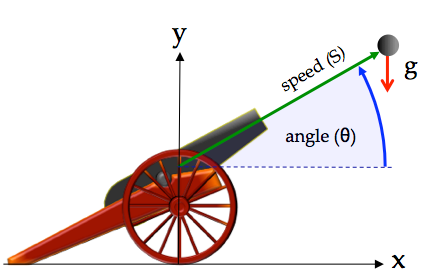mirror of
https://github.com/nasa/trick.git
synced 2025-01-16 01:39:57 +00:00
| .. | ||
| images | ||
| Modified_data | ||
| RUN_graphics | ||
| RUN_test | ||
| README.md | ||
| S_define | ||
| S_overrides.mk | ||
#SIM_cannon_analytic
This is first of eight Trick-based simulations that one builds in the Trick Tutorial (Section 3). It's purpose is to introduce some of the fundamentals of building a Trick simulation.
Here we simulate the flight of a cannon ball. We want to know the position and velocity of the cannon ball over time, given an initial position, and velocity, and subject to the following assumptions and limitations:
- The only force acting on the cannon ball is gravity.
- The acceleration of gravity (g) is constant and equal to -9.81 meters per second squared.
- The surface of the ground is defined as where y=0.
Solution
This problem has a closed-form solution, so that's what is used.
The cannon ball will impact the ground, when y(t)=0 at:

















